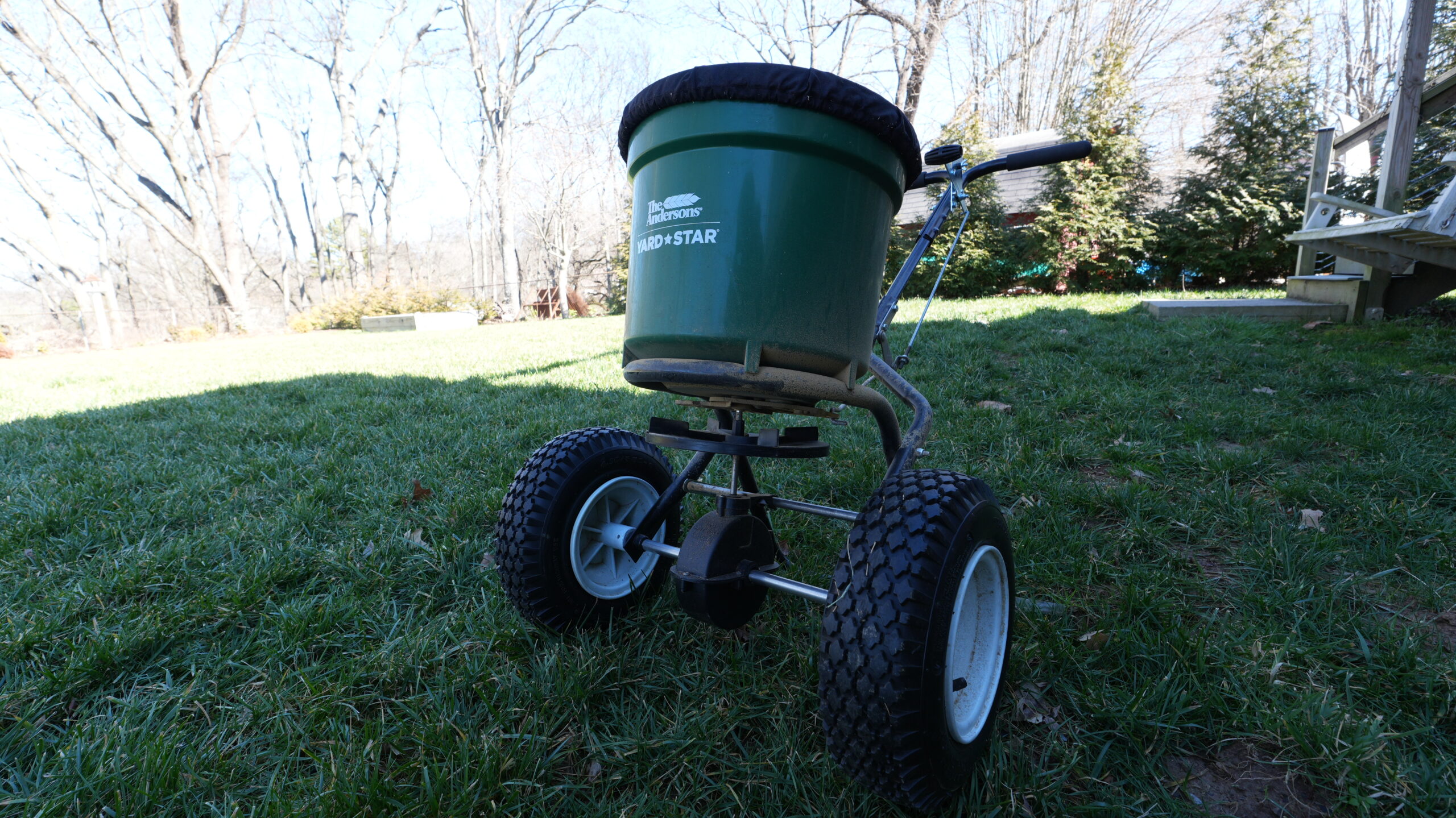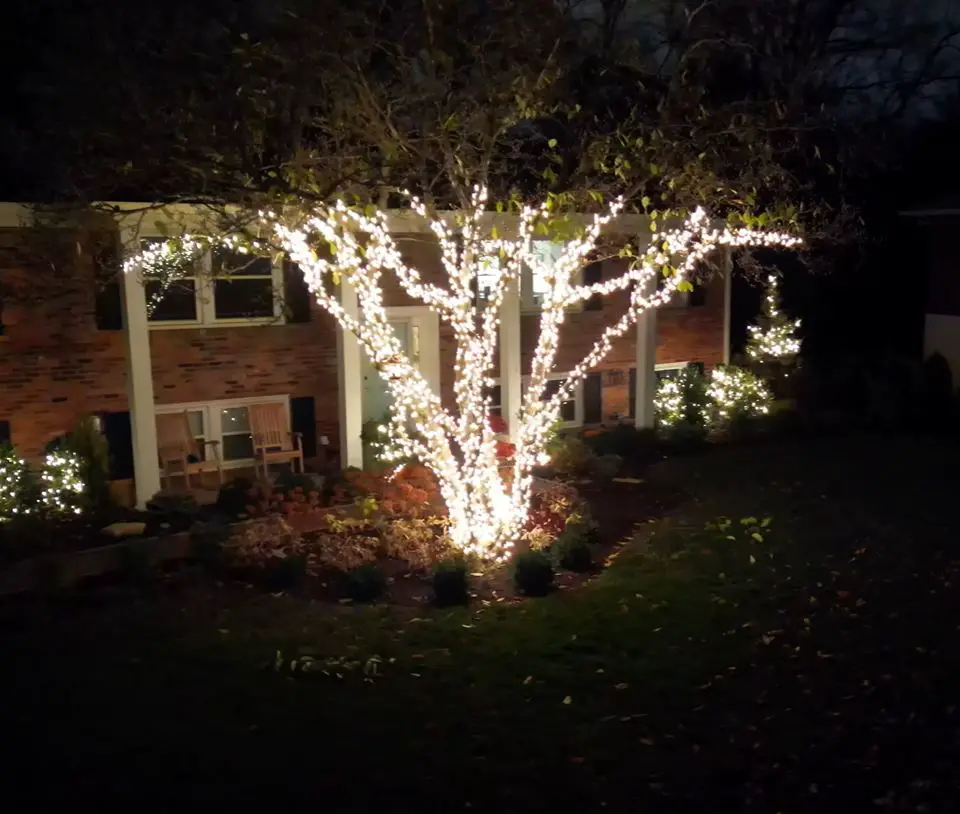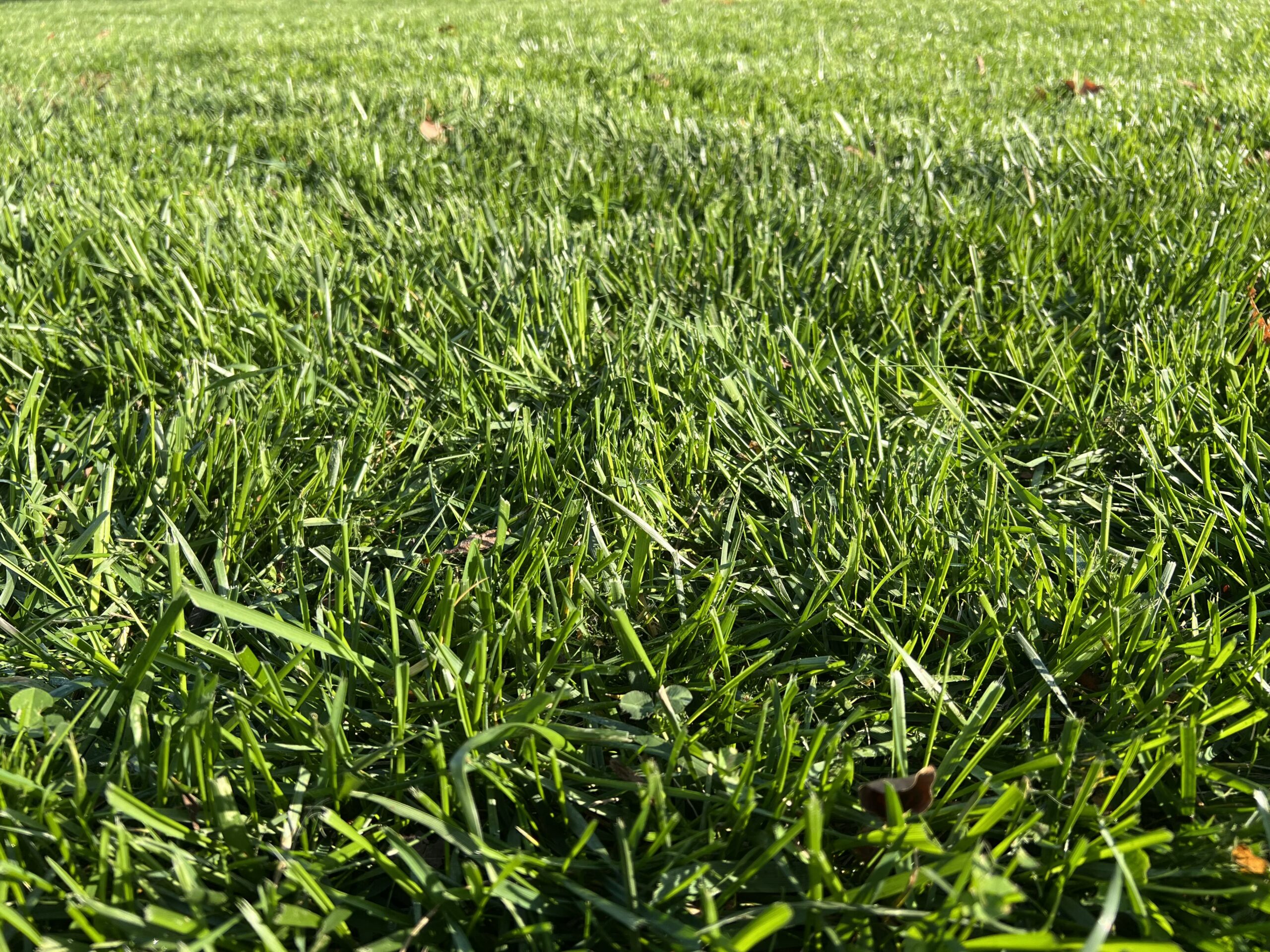Rubber mulch is one of those weird things in the landscaping industry that makes a lot of people suspicious. Why use rubber mulch when there is an abundance of wooden mulch?
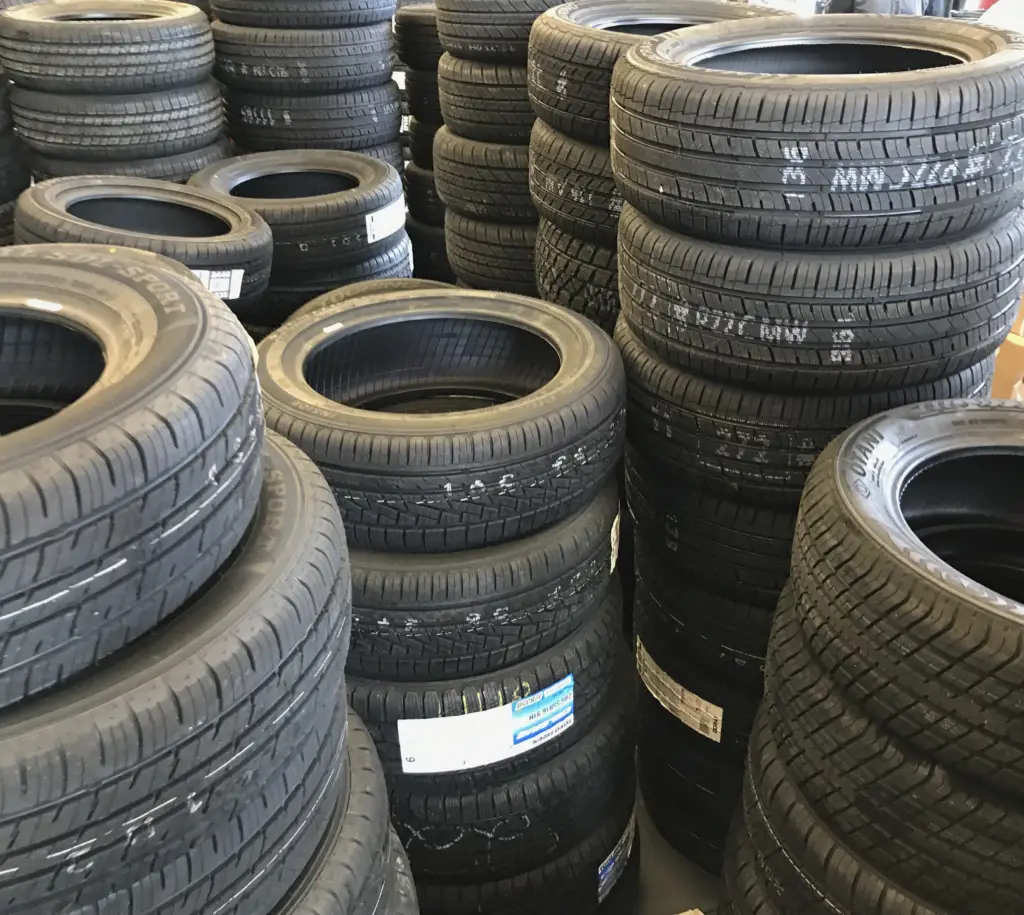
Bottom line on Rubber Mulch: Rubber mulch has quite a few benefits, but really is optimal for only a handful of scenarios.
Today, I am going to walk you through what the heck rubber mulch is, when to use it, where to get it, and more.
But before we get started, let’s be clear – rubber mulch isn’t for everyone. In fact, most homeowners aren’t even aware of its existence. Buckle up, because you’re about to have your mind blown.
Jump ahead:
- Rubber mulch vs wood mulch
- Benefits of rubber mulch
- Rubber mulch problems
- Using rubber mulch on playgrounds
- Where to buy
Rubber mulch vs wood mulch
Rubber mulch and wood mulch are both used for similar purposes. Beyond the aesthetics, mulch has a number of meaningful functions that provide a safe environment for plant growth..
Let’s check it out.

Similarities between rubber and wood mulch
Below are some similarities between rubber mulch and wood mulch:
- Aesthetics: from a distance, rubber mulch looks just as good as a fresh mulching with wood-based mulch.
- Weed control: although this remains a subject of contention, both rubber and wood mulch provide protection against weeds. Many folks argue that it requires a lot of rubber mulch to fully choke out the weeds, but so does wood mulch. It probably just “feels” like more mulch since it spreads so differently.
- Temperature regulation: rubber mulch retains heat decently well and can provide a decent level of protection, as does traditional wood mulch.
- Durability to soil: both wood and rubber mulch provide a level of durability to wherever they are laid. This helps prevent soil runoff, is more forgiving when people or animals walk through it.
Differences between rubber and wood mulch
While they look the same and provide many of the same benefits, there are definitely differences between a synthetic and an organic substance. Let’s take a look:
- Water retention: rubber mulch may provide some benefit to water retention, but only marginally when compared to wood mulch. The density of wood mulch allows it to act like a sponge for water.
- Decomposition: wood mulch breaks down over time and provides nutrients to the soil, allowing it to benefit from the mulch. Rubber mulch breaks down over 50 to 80 years and provides no nutrients to your soil.
- Replacement frequency: wood mulch needs to be replaced every 1-3 years due to its decomposition. Rubber mulch can last for 10 years (or more).
- Price: Wood mulch is pretty cost efficient and can be picked up in bulk or in bags. Lowe’s has 5 bags of mulch for $10 on sale every year and Home Depot also has a mulch sale where you can get mulch for a great deal.
Does Rubber Mulch smell?
Remember the days in gym class when they would take everyone out to the track and make you run a few laps? The running wasn’t the tough part, it was the smell.
Some people like it – but mostly due to the nostalgia of running track or playing on a turf football field. But if you expect to have a rubber mulch yard, you will definitely get whiffs of rubber.
Heat can definitely make the smell a little more potent, but it truly isn’t a super noticeable smell.
AND regular mulch has a smell as well – so there isn’t a totally smell-free choice.
How long does rubber mulch really last?
Most folks say that rubber mulch will last over 10 years. While most wood mulches fade in color and decompose, rubber mulch keeps its color and doesn’t break down. Additionally, the maintenance is minimal – only requiring occasional raking.
What is rubber mulch made of?
Believe it or not, rubber mulch is made of recycled tires. Yep, they take all the old tires from cars, trucks, farming equipment, and construction equipment then shred it down to a consistent size.
It then gets dyed with whichever color you choose, bagged, and shipped to whichever place you grab it.
What are the benefits of rubber mulch?
Rubber mulch has a bunch of benefits that make it popular at upscale resorts, playgrounds, and other commercial properties.
- Prohibits weed and fungal growth: part of the reason people pick rubber mulch is that it doesn’t store water or contain nutrients the way that rubber mulch does. This means that fungus is not going to grow in this soil.
- Keeps insects and mice away: again having an artificial environment makes it an unattractive place for insects or mice to get their food. Keep pests away from your house with rubber mulch.
- It’s super low maintenance: weeds don’t grow in it either because they can’t germinate in the soil below if they never make it. That means weeding is super rare and you only have to give it the occasional rake to keep the sun-exposed pieces mixed in with the others. Oh yeah – and you only have to change it every DECADE.
So what are the problems with rubber mulch?
Sounds too good to be true? Well, it can be. There are definitely some drawbacks. For starters, rubber mulch doesn’t have as much of the “smothering” effect that wood mulch has. With wood mulch, you can use it to crush and kill weeds. With rubber mulch, you’ll really want to clear the weeds beneath and do what you can to keep them dead. Once the rubber mulch is down however, you shouldn’t have problems.
Ever heard of a tire fire? Well, rubber mulch is flammable just like rubber tires. Which is an absolute nightmare. I’ve never heard of this happening personally, but it is definitely a possibility.
Lastly, rubber can leach chemicals into the soil and surrounding environment. Recycled tires tend to soak up other chemicals they get exposed to during their lifetime. If the tires that are now in your garden were exposed to high levels of zinc or other minerals – they can leach into the soil and kill some plants. During the rubber breakdown process, there are other chemicals that can accumulate and leach into the soil as well. At high concentrations, these have been found to be harmful.
Rubber mulch for playgrounds
Nothing like a transition from the dangers of rubber mulch to its applications in children’s playgrounds! Nevertheless, rubber mulch can have great applications in playgrounds. I say this because it does such a good job of absorbing falls.

Although rubber mulch can have a tough texture and not necessarily feel good to fall on to, it gives much more bounce to kids when they fall down. Another beauty to rubber mulch for playgrounds is that you don’t get the natural erosion that you see with wooden mulch playgrounds. You know the areas under the swings that form holes and fill with water? Rubber mulch really won’t do that.
Lastly, rubber mulch on playgrounds is way less messy. That means you can save a bit on laundry by letting your kids have a blast in their playground without becoming completely covered in mud.
Where to buy rubber mulch near you
Both your local Home Depot and Lowe’s sell bagged rubber mulch. Rubber mulch is much more expensive than traditional wood mulch, with costs being nearly 3-4x higher per cubic foot.
For example, you can grab this rubber mulch at Home Depot for not an insane price.
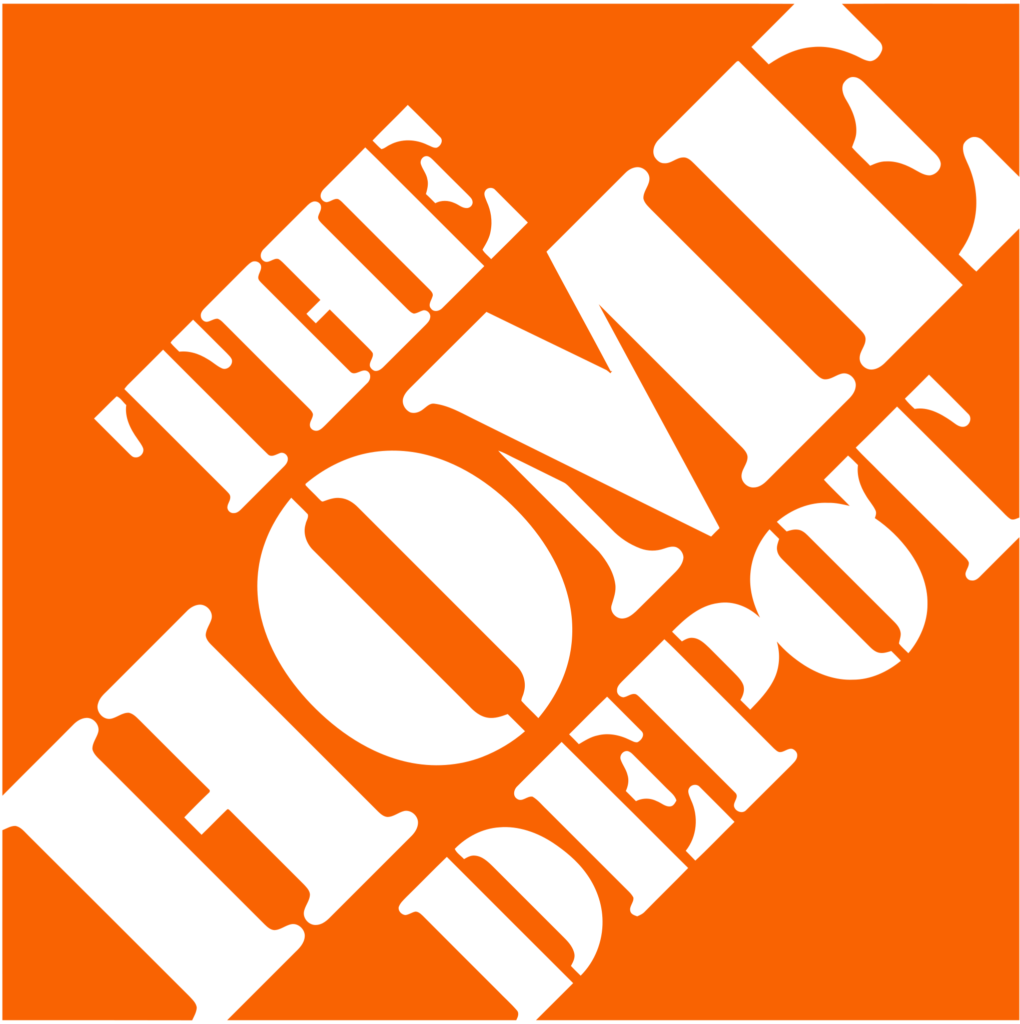
As a reminder, you have to replace rubber mulch every 10-12 years, so you will definitely save money in the long run.
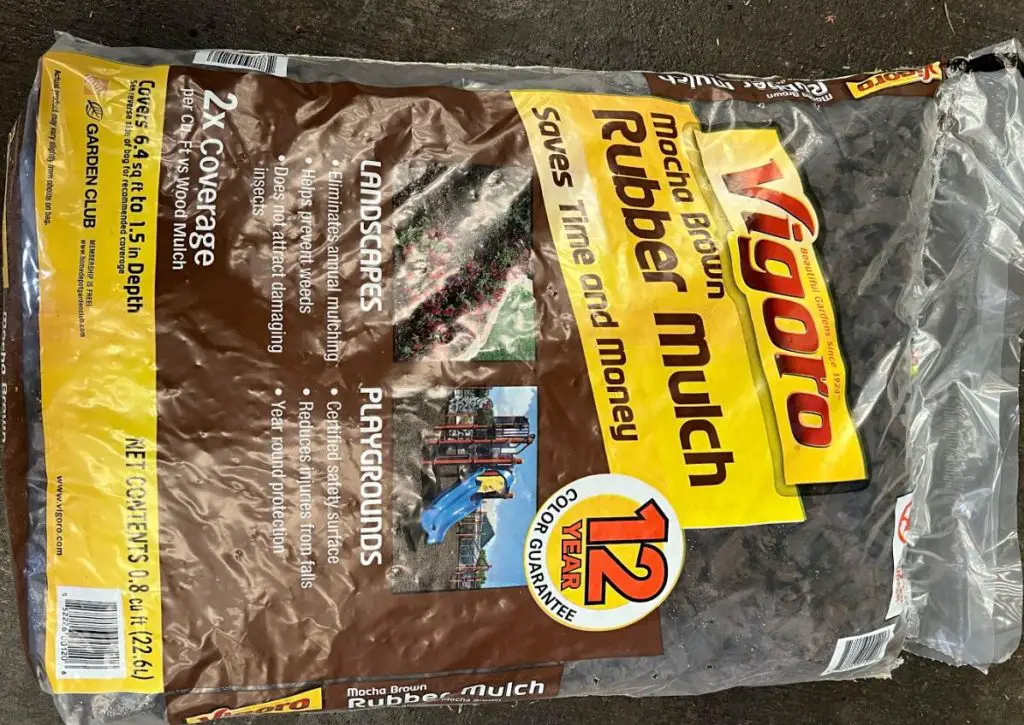
If you’re looking to buy bulk rubber mulch for a larger area, there are places like RMP USA and Mulch Direct that can ship large quantities directly to you for cheaper than bagged mulch.
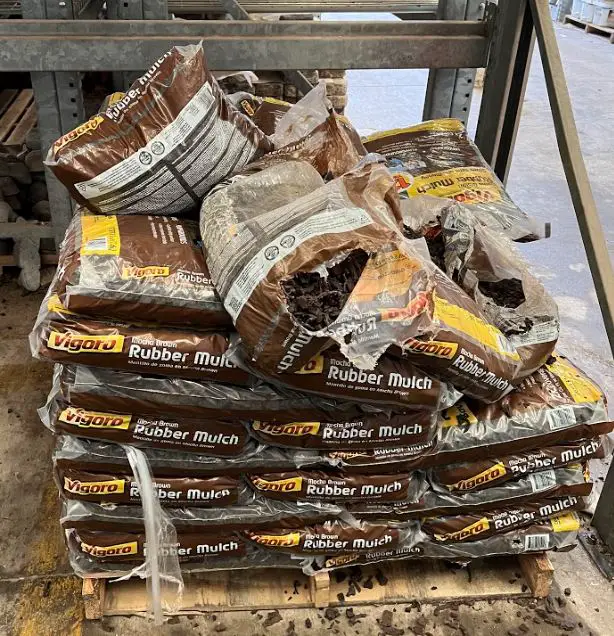
Installing rubber mulch
Installing rubber mulch is actually a breeze! I’ll make it super easy and go step-by-step.
- Clear the area you’d like to apply mulch. I recommend laying down weed killer a week or so in advance, then completely tilling the soil. Once it is tilled, rake it to be completely flat. We basically want this area to be dead….forever.
- Once you have a flat, dead area of land – measure it out to understand exactly how much rubber mulch you need. For most gardeners, 1-2 inches deep is all you will need. If it’s a playground, I would go a little deeper just to give your kids some buffer.
- Calculate how much rubber mulch you need and go grab it from your store of choice.
- Over the area where you’d like to lay down the rubber mulch, lay down some landscaping fabric. You can get it for a really cheap price on Amazon.
- Once the fabric is down, you may want to secure the perimeter with some landscape edges. Some people use bricks, but you can also grab some nice edges for the exterior. I personally use this one that I got on Amazon and installed in like 5 minutes.
- Then, simply load in all the mulch and rake it to a nice, level surface.
- Go inside and pat yourself on the back!
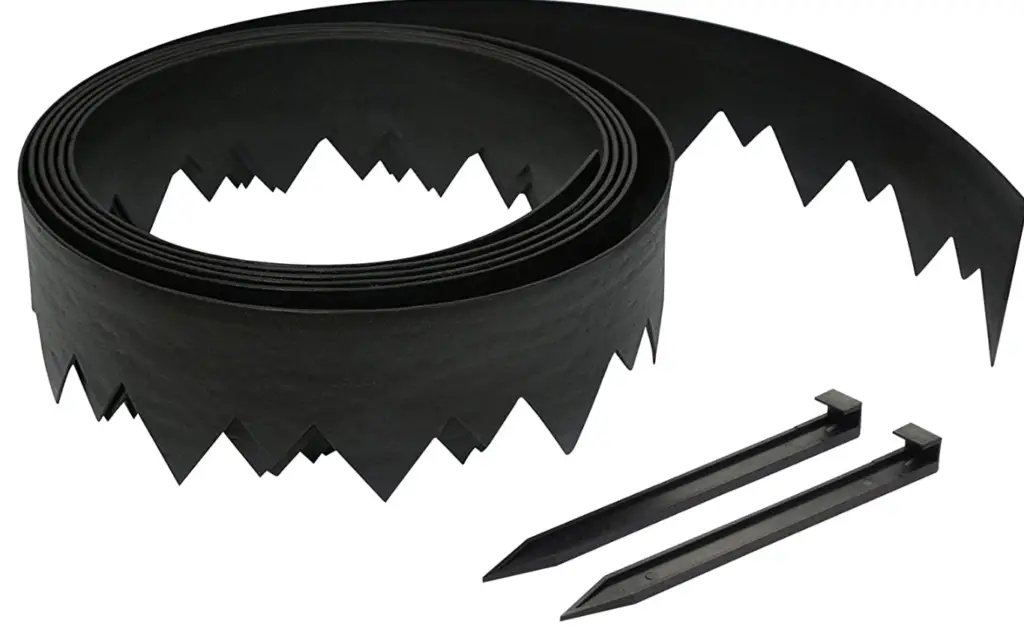
It really is that simple and will make you feel so accomplished.
Final thoughts on a rubber garden
Rubber mulch is great for many people, but not for everyone. Make sure you understand the downsides to using rubber mulch before diving in head-first and making the investment. If you aren’t totally sold, start with a small area or even a potted artificial plant to see if it smells or if you like the way it looks.
If you’re looking for the best time of year to put down mulch, check out our tips.
Why we started this site
We started The Lawn Review out of frustration. We couldn’t find clarity around what type of products were actually good and reliable. All the fertilizers we tried didn’t work. We ended up with a dying lawn, wasted time, and wasted money.
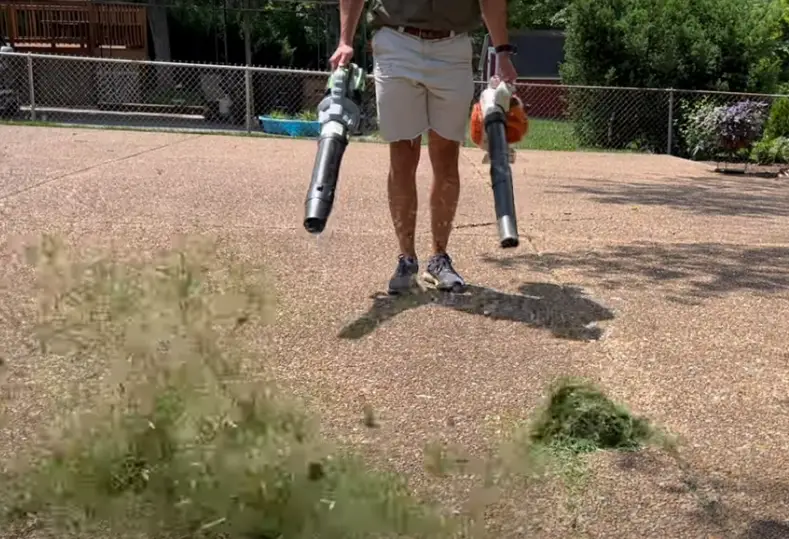
So we started buying and reviewing lawn tools and figuring out which ones were the best. And now we’ve moved onto actually keeping that lawn looking nice all year around.
We’ve spent thousands of hours building this content for people just like you and me – normal people.

